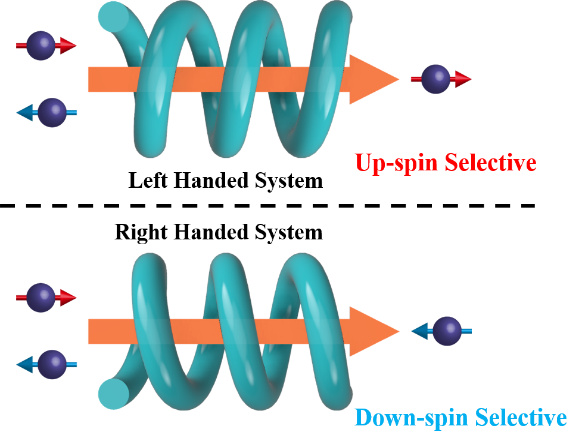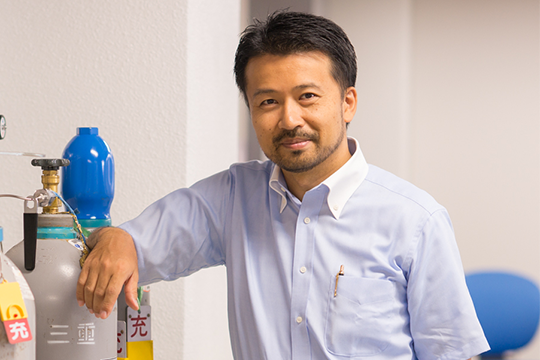Research Theme
Open up Future Electronics by Organic Molecules
Keywords
Molecular Conductors, Organic Superconducting Transistors, Supramolecular Nanowires, Organic spintronics
Organic molecules are attracting recent attention as new ingredients of electronic and spintronic circuits. Their functionalities have been developed considerably, but are still to be explored and advanced. Our group focuses on a development of organic electronics in the next era by providing new mechanism and concepts of the device operation and fabrication. For example, an electronic phase transition is utilized for the ON/OFF switching of our field-effect-transistor (FET). This special FET is called an organic Mott-FET, where the conduction electrons in the organic semiconductor are solidified at the OFF state because of Coulomb repulsion among carriers. However, these solidified electrons can be melted by applying a gate voltage, and show an insulator-to-metal transition so-called Mott-transition to be switched to the ON state. Because of this phase transition, a large response of the device can be achieved, resulting in the highest device mobility ever observed for organic FETs. At the same time, Mott-transition is known for its relevance to superconductivity. Not only in organic materials but also in inorganic materials such as cuprates, Mott-transition is frequently associated with superconducting phase at low temperature. Indeed, our organic FET shows an electric-field-induced superconducting transition at low temperature. Besides these studies, we are also engaged in development of novel spintronics devices based on chiral organic molecules.

Conceptual schematic for CISS (= Chirality-Induces Spin Selectivity) effect. P-helix molecule (lower panel) can transmit more electrons with spins antiparallel to the velocity (negative helicity electrons) than the other, while M-helix molecule (upper panel) favors transmission of electrons with parallel spin (positive helicity electrons).
Selected Publications
-
R. Nakajima, D. Hirobe, G. Kawaguchi, Y. Nabei, T. Sato, T. Narushima, H. Okamoto, and H. M. Yamamoto "Giant spin polarization and a pair of antiparallel spins in a chiral superconductor" Nature 613, 479 (2023).
-
J. Kishine, H. Kusunose, and H. M. Yamamoto "On the Definition of Chirality and Enantioselective Fields", Isr. J. Chem. 62, e202200049 (2022)
-
M. Suda, Y. Thathong, V. Promarak, H. Kojima, M. Nakamura, T. Shiraogawa, M. Ehara and H. M. Yamamoto “Light-driven Molecular Switch for Reconfigurable Spin Filters” Nature Commun., 10, 2455 (2019).
-
M. Suda, R. Kato, and H. M. Yamamoto "Light-induced superconductivity using a photo-active electric double layer" Science, 347, 743-746 (2015).



